Estádio do Dragão: FC Porto
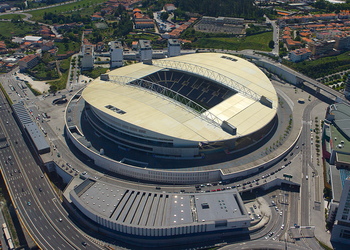
By CaGeRaGe (Own work) [CC BY-SA 4.0], via Wikimedia Commons
Futebol Clube do Porto, to give them their proper name, have been playing their home games at the 50,000 seat Estádio do Dragão since it opening in November of 2003. It replaced the Estádio das Antas, officially known as Estádio do Futebol Clube do Porto, where the club had played their matches from 1952. Called the Dragon Stadium when translated to English, the ground was designed by the Portuguese architect Manuel Salgado and witnessed it’s first match on the 16th of November 2003 when Barcelona played a friendly match against Porto.
The Estádio do Dragão is a UEFA Category 4 stadium, meaning that it can be used to host high profile matches such as the opening game of the EUFA European Championships in 2004. It also has the ability to host concerts and bands like Coldplay, Muse and even The Rolling Stones have performed there. It cost just under €100 million to build the stadium and about eighteen and a half million Euros came from the Portuguese government. In order to help subsidise the cost of building it each of the stands has at least one sponsorship name at any given time.
Stats
| Estádio do Dragão Stats | |
|---|---|
| Year Opened | 2003 |
| Capacity | 50035 |
| Average Attendance | 31653 |
| Record Attendance | 52000 (Porto v Barcelona (2003)) |
| Pitch Size | 105 x 68 (7140) |
| Owner | FC Porto |
| Clubs Hosted | FC Porto |
| First Fixture | Porto v Barcelona (16/11/2003) |
| FC Porto Stats | |
|---|---|
| Year Founded | 1893 |
| Nickname | Dragões, Azuis e brancos |
| Club Mascot | Draco, the Dragon |
| Rivals | Benfica, Sporting CP, Boavista |
| Previous Stadiums | Estádio das Antas |
| Kit | Blue & White Stripes (Home) / Blue & Black (Away) / Pink & Black (Third) |
| Training Ground | CTFD PortoGaia |
| Shirt Sponsor | MEO |
| Team Owner | Fan Owned |
| Record Goalscorer | Fernando Gomes (352) |
| Record Appearances | João Pinto (587) |
Estádio do Dragão Photos
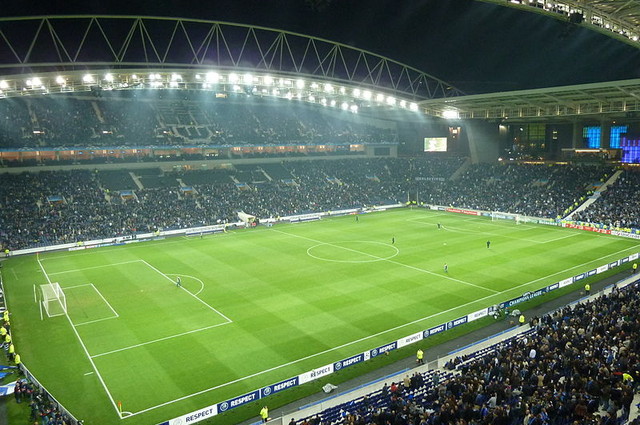
By Edgar Jiménez from Porto
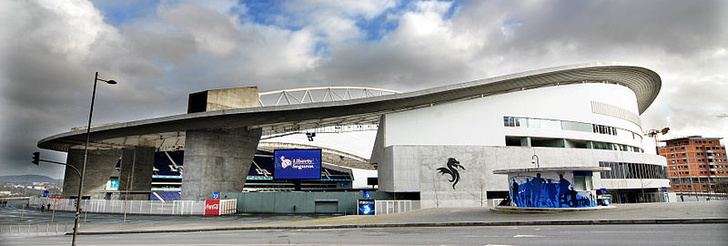
Antnio Amen [CC BY-SA 3.0]
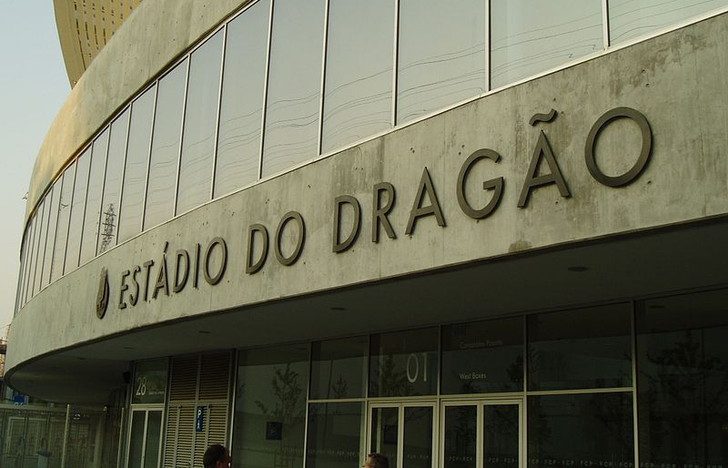
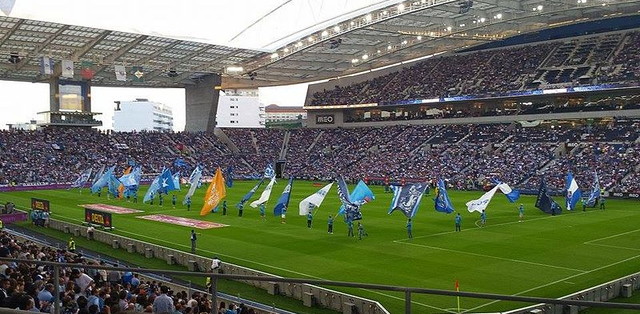
By Cédric23170 (Own work) [CC BY-SA 4.0]
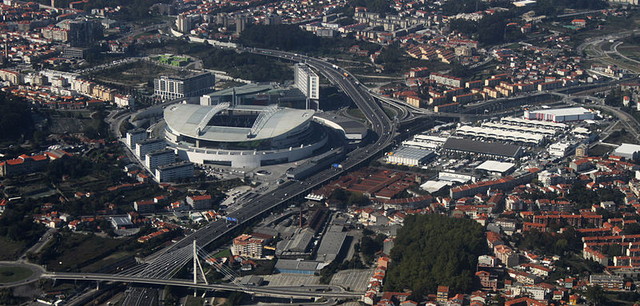
By David Machado (Own work) [CC BY-SA 3.0]

By The original uploader was Joaocastro at English Wikipedia [CC BY 1.0]
Estádio do Dragão Seating Plan and Where to Sit
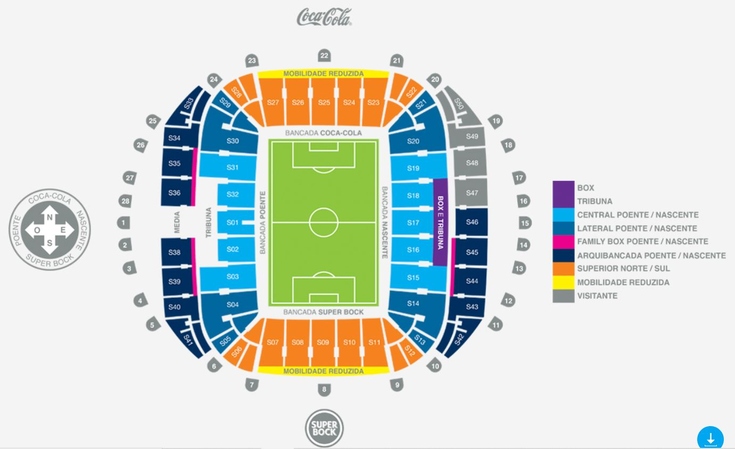
Estádio do Dragão is built in the ‘European Style’ of having a bowl of continuous seating. This is often preferred on the continent to the ‘English Style’ of having four separate stands on each side of the ground. Here’s some information about the different stands at the ground:
- The North Stand – This stand is located behind one of the goals and has a single-tier of seating. This means that it will be reasonably easy to upgrade the stadium’s capacity by adding another tier in the future.
- The East Stand – There are two tiers to this stand, separated by a row of executive boxes. The stand runs along the side of the pitch.
- The South Stand – Similar to The North Stand that is at the opposite end of the ground, The South Stand has a single tier and is behind the other goal. Where The North Stand has a section for away supporters, however, this stand is entirely for home fans.
- The West Stand – Pretty similar to The East Stand in that it has two tiers separated by a row of executive boxes and runs the length of the pitch, The West Stand differs in that it houses the players’ tunnel, changing rooms and the dugouts.
FC Porto Ticket Prices
Ticket prices to see Porto play can vary wildly depending on who it is that they’re up against. You’ll also pay different amounts depending on where it is in the ground that you’d like to sit. The prices for the club’s 2022 Europa League match against Olympique Lyonnais will give you an idea though, with public sale tickets ranging between €25 and €55, but available as cheaply as €12 for members. For a domestic league game against CD Tondela in the same year they were a much more affordable €14 to €28 depending on where you wanted to sit, and from just €8 for members.
How To Get FC Porto Tickets
You can get tickets online or by calling the club directly, though in both instances you’d do well to speak a little Portuguese to make sure you’re getting the right thing. You can wait until closer to the time of the match and pick them up directly from the box office or, if you’d prefer then you can get tickets through the club’s official ticket selling partner.
Where to Buy
Getting To Estádio do Dragão
Porto is one of Portugal’s most picturesque cities, known for its bridges and, of course, it’s production of wine and port. There are plenty of ways to get there, with these being some of the more obvious ones:
Train – It will take the best part of a day to get to Porto on the train, leaving from London St. Pancras and going via Paris, Irun in Spain and Coimbra in Portugal before eventually arriving at your destination. Once in Porto you’ll want to take the Metro as the stadium has it’s very own Metro station called Estádio do Dragão. It is the final stop on Lines A, B and E.
Bus – Buses 401, 700, 800, 801, 806 and 7M all run from the centre of Porto out to the ground, so they’re the ones to keep an eye out for if you’re hoping to get the bus rather than use the excellent Metro system.
Car – Driving abroad is always tricky, but if you’re determined to get to the ground by car then your best bet will be to get a sat-nav and head to 4350-415 Porto.
By Air – Aeroporto do Porto, officially known as Francisco Sa Carneiro, is about fifteen kilometres from the centre of Porto. You can get Metro line E from the airport so you can head straight to the ground if you’d like to.
Taxi – A taxi from the centre of town will cost about €10 and should take around fifteen minutes to get you to the station.
Parking Near Estádio do Dragão
There is a cheap parking centre at the stadium that you can use on match days, though it does get very busy if you’re not there early enough.
Useful Resources
Estádio do Dragão Hotels
As one of the most visited cities in Portugal there are plenty of hotel options for you in Porto. Here are some of our favourites:
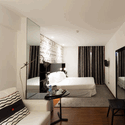
Porto Trindade Hotel - £60+

Hotel Dom Henrique Downtown - £70+
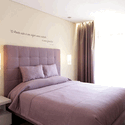
Porto Old Town - £80+
Pubs and Bars Near Estádio do Dragão
As we’ve already mentioned once or twice, Porto is famed for it’s port production and there are a number of places you can go to enjoy this to its fullest. There are plenty of decent sports bars too, though:
Ryan’s Irish Pub
CLUB port rugby
Catraio - Craft Beer Shop
Facilities
Estádio do Dragão isn’t one of the newest stadiums in Portugal but the facilities are what you’d expect from a top-class side’s stadium. There are all of the usual places to buy food and drink as well as plenty of toilets and large atriums to hang around on before the game. The views are pretty great from everywhere in the ground, too.
Hospitality
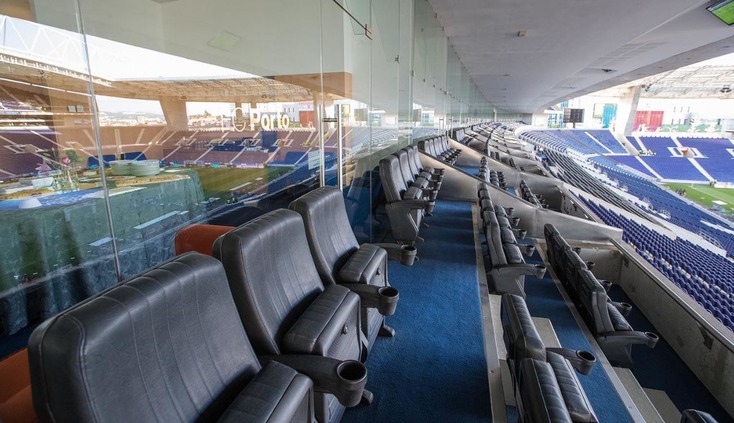
There are three main areas of hospitality at the Estádio do Dragão and you’ll be guaranteed a wonderful experience should you be fortunate enough to see the game from any of them. Here’s some information on all the different choices available:
- East Stand Boxes – As the name suggests, these boxes can be found in The East Stand and have a fantastic view of the pitch. You’ll get access to what the club call their ‘common lounges’ before watching the game in the comfort of your private box along with between eleven and fifteen friends or family members.
- West Stand Boxes – If The East Stand boxes are good then their West Stand equivalents are on the next level. Here you’ll experience a premium service with boxes that can fit between eighteen and twenty-four people in them. You’ll get catering inside the box and VIP parking.
- VIP Tribune – The Box Tribuna is located at the back of the lower tier of The East Stand. It is aimed at Porto supporters who want to have a VIP experience but also like the feel of the match. You’ll get catering and hospitality service in the common area as well as VIP seating in the middle of the stand itself.
Private Hire
With a number of different facilities available it’s fair to say that you’ll be able to rent a private space at Estádio do Dragão should that be something you fancy doing. Your best bet is to contact the club directly and see what exactly they can offer you.
Stadium Tours & Museum
There are guided tours of the Estádio do Dragão every day apart from Mondays. They leave at 11am, 12pm, 3pm and 4pm provided that it’s not a match day. You’ll get to see behind-the-scenes of Porto’s home ground, including the dressing rooms, the players’ tunnel the dugouts and more. Tours last for 45 minutes and cost €15 for adults, €12 for senior citizens and €10 for children aged five to sixteen. This also includes entry into the museum, where you’ll be able to have a look at some of the most exciting moments in Porto’s history as well as see some of the club’s memorabilia and learn all about its illustrious past.
About FC Porto

Futebol Clube do Porto was founded on the 28th September 1893 and is one of so called ‘Big Three’ clubs in Portugal. The other two are both based in Lisbon – Benfica and Sporting Clube de Portugal. The three of them have appeared in every one of Portugal’s Primeira Liga seasons since it was established in 1934. A dragon sits on top of the club’s crest and gave it its nickname of The Dragons. A supporter of Porto is known as a Portistas in the same way that Liverpool supporters are known as Kopites or Everton fans are called Evertonians.
Porto is the second most successful football club in all of Portugal. They have won an incredible 79 trophies including 29 league titles at the time of writing. They set a Portuguese record when they won five of the titles in consecutive seasons between 1994 and 1999. They are also the only Portuguese team to have won two titles without losing a game, something that the achieved firstly in 2010-2011 and then again in 2012-2013. They have won the Champions League twice, originally in 1987 when it was known as the European Cup and then again in 2004. They’ve also won the Europa League twice, once in 2003 when it was the UEFA Cup and then again in 2011.
Estádio do Dragão History
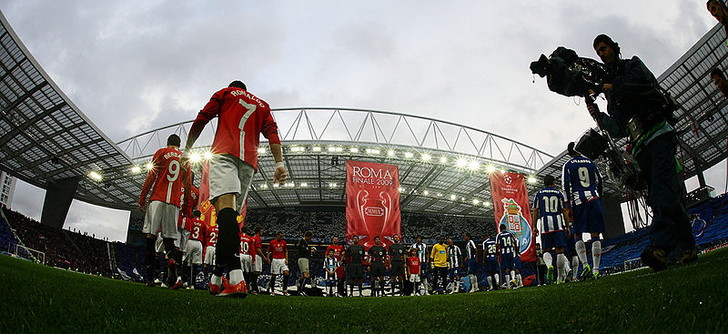
Estádio do Dragão opened in 2003 and replaced Estádio das Antas as the home of FC Porto. It hosted its first game on the 16th of November 2003 when Barcelona turned up for a friendly against the hosts. That was also the match that set the attendance record in the group of a sell-out match for 52,000 people. It took two years to build the stadium under the watchful eye of the architect Manuel Salgado and the Portuguese contractor Somague. It would have been built quicker but for a disagreement between the mayor of Porto, Rui Rio, and the club regarding estate distribution which led to a suspension of building work.
It’s status with UEFA means that it can be used for any number of footballing events. It was originally constructed to be used as one of the venues when Portugal hosted the UEFA European Championships in 2004, hosting the first match of the entire tournament between the hosts and the competition’s eventual winners Greece. It staged three group games, a quarter-final match and a semi-final. The Portuguese national team have used it for a number of friendlies and qualifying matches. Bands such as Deep Purple, Muse and One Direction have hosted matches there.
Future Developments
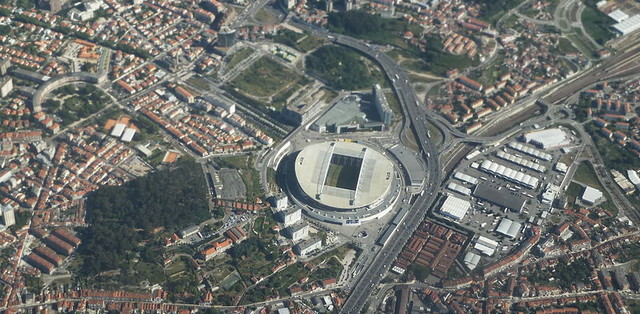
Though the stadium is one of the best in Portugal, there will still be adaptions to it moving forward. There are plans to build a residential area nearby as well as a multipurpose sports pavilion and a shopping centre. Estádio do Dragão was also updated to host big international games including the 2019 UEFA Nations League Final and 2021 UEFA Champions League Final.
